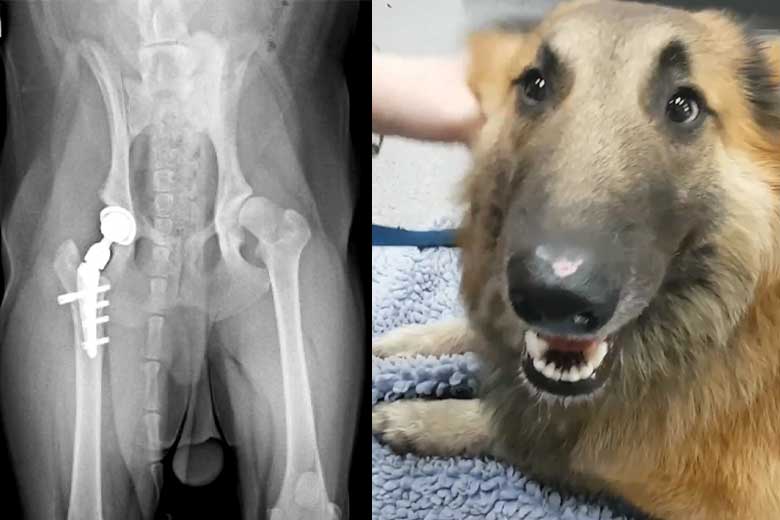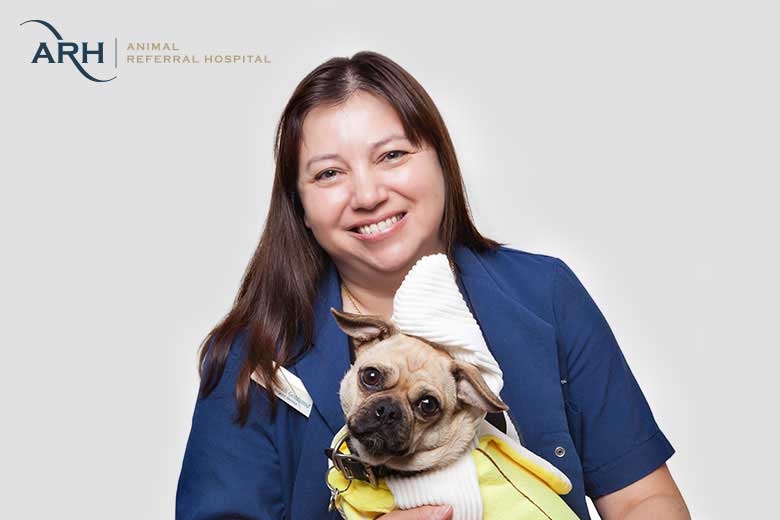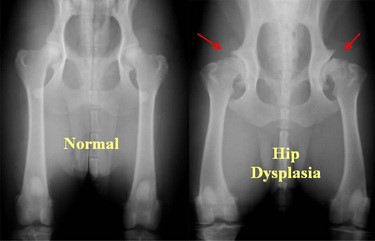Major is a beautiful two-year-old Belgian Shepherd (Tervuren) who is very active and loves going for walks. However, Major didn’t have an easy start to life. Sadly, just after his first birthday, Major’s owners noticed that he was struggling on walks and limping. Major’s owners took him to their local vet who did an examination and then referred Major to see Dr. Sarah Goldsmid, specialist surgeon at the Animal Referral Hospital in Homebush.
After further testing, Major was diagnosed with severe hip dysplasia and this is what was causing him lots of pain. Major’s owner’s decided to proceed with hip replacement surgery and Dr Sarah Goldsmid performed the surgery at ARH Homebush. The surgery went very well and Major made a full recovery. He now has a bionic titanium hip and is back to his bouncy puppy-self! Major is just one of many dogs who have received a new lease on life from this amazing surgery. Keep reading to learn more from Dr. Sarah Goldsmid as she tells us about what’s involved in Total Hip Replacement surgery.

An article by Dr Sarah Goldsmid (BVSc, MVetClinStud, FANZCVSc), Specialist Small Animal Surgeon from Animal Referral Hospital Homebush in Sydney.
Just like people, dogs can get hip problems and end up with pain when they walk. The most common cause of problems in this joint is hip dysplasia, which can start causing issues when your dog is still a puppy and progresses to severe osteoarthritis in one or both hips as the dog ages. This is what Major was diagnosed with. We also see dogs that have had accidents causing comminuted fractures of their femoral head (ball part of the joint) or dislocations of the hip, or severe hip arthritis following previous injury to the joint. Radiographs (x-rays) or a CT scan are required to better evaluate the hips.

Sometimes we can manage the hip pain with medication, modified exercise, physiotherapy and weight control. However, in some dogs, this is not enough and surgery is indicated. Depending on the age and size of the dog, the severity of the arthritis and other factors – several surgical options are available. A total hip replacement (THR) is one of these options and provides the dog with a totally new joint with normal range of motion and pain-free function. We perform total hip replacements at Animal Referral Hospital. This involves removal of the ball part of the joint (the head of the femur) and the replacement of it with a new ball attached to a “stem” that sits within the femur and is secured with multiple screws. The “socket” or cup in the pelvis is reamed and a new artificial cup is inserted with a press fit. The cup’s clever design allows bone to grow in to the outer shell and encourages it to become integrated into the pelvis over time.

At the Animal Referral Hospital we have been placing THR’s in dogs since we first opened in 1999. We use a “cementless” system (the Kyon cementless THR) that comes from Switzerland and is made of titanium. The stem is internally screwed into the femur to provide instant stability and the dogs are usually using the leg and hip the day after surgery. The titanium is very resistant to infection and inert in the body. Cemented hips have been associated with complications in people and dogs (including loosening, infection and cement toxicity) which is why a “cementless” system like the Kyon THR is preferred. Prognosis is excellent for improvement in function and elimination of pain.
If your dog has back leg gait problems related to hip pain– talk to your local Greencross Vets team and discuss referral to one of our highly trained specialist surgeons at Animal Referral Hospital .
Dr Sarah Goldsmid BVSc, MVetClinStud, FANZCVSc
Specialist Small Animal Surgeon
Animal Referral Hospital Homebush


 Greencross Vets
Greencross Vets 

